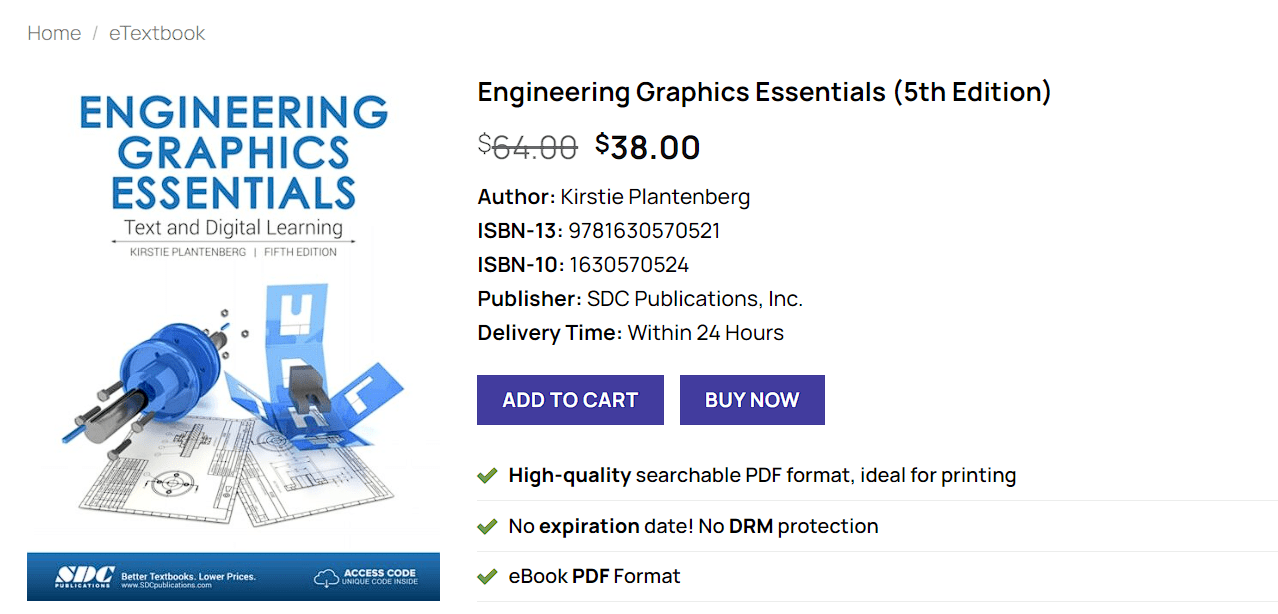The “Engineering Graphics Essentials 5th Edition” serves as a cornerstone resource in the educational and professional development of engineers. This comprehensive guide is designed to equip both engineering students and seasoned professionals with the critical skills and knowledge required to excel in the field of engineering graphics. The primary purpose of this edition is to provide a detailed understanding of the principles and practices that form the foundation of engineering graphics, a discipline imperative across various engineering sectors.
The 5th edition of Engineering Graphics Essentials is meticulously structured to address the evolving needs of the engineering community. It caters to a wide range of readers, from novice students embarking on their academic journey to experienced professionals seeking to refine their technical drawing skills. The book’s content is carefully curated to ensure it remains relevant and practical, offering a blend of theoretical insights and hands-on applications.
Mastering engineering graphics is not merely an academic exercise but a vital competency in the engineering profession. This discipline underpins the ability to visualize, design, and communicate complex engineering concepts effectively. Whether it is mechanical, civil, electrical, or aerospace engineering, a strong grasp of engineering graphics is indispensable. The Engineering Graphics Essentials 5th Edition empowers readers to develop proficiency in this area, fostering a deep comprehension of technical drawings, geometric constructions, and computer-aided design (CAD) techniques.
Moreover, the book emphasizes the significance of precision and clarity in engineering documentation. It offers a step-by-step approach to various topics, ensuring that readers can build their skills progressively. By integrating practical examples and exercises, the 5th edition ensures that learners can apply their knowledge to real-world scenarios, thereby bridging the gap between theory and practice.
In essence, the Engineering Graphics Essentials 5th Edition is more than just a textbook; it is a vital resource that supports the continuous learning and professional growth of engineers. Its comprehensive coverage and practical orientation make it an invaluable tool for mastering the intricacies of engineering graphics and advancing one’s career in the engineering domain.
Key Concepts and Principles in Engineering Graphics Essentials
The Engineering Graphics Essentials 5th Edition provides a comprehensive exploration of fundamental elements crucial for anyone in the engineering field. One of the core topics discussed is geometric construction, which forms the backbone of technical drawing. Geometric construction involves creating accurate representations of objects using basic geometric shapes. This practice is vital for ensuring precision and clarity in engineering designs.
Another critical concept covered is technical drawing standards. These standards, such as ISO and ANSI, serve as the universal language for engineers, ensuring that drawings convey the correct information regardless of the viewer’s location or background. Adherence to these standards guarantees that all technical drawings are consistent, interpretable, and reliable.
Orthographic projections are extensively discussed as well. These projections are essential for visualizing three-dimensional objects in two dimensions. By using multiple views, such as front, top, and side, engineers can accurately depict the dimensions and spatial relationships of complex components. This method is indispensable in the creation of detailed and precise engineering blueprints.
Computer-aided design (CAD) is another pivotal topic in the Engineering Graphics Essentials 5th Edition. CAD technology revolutionizes the way engineers design and analyze their projects. It allows for the creation of detailed 3D models and simulations, facilitating a more efficient and error-free design process. CAD tools also enable engineers to test various design scenarios, optimize their creations, and ensure they meet all necessary specifications before actual production.
In essence, the “Engineering Graphics Essentials 5th Edition”, technical drawing standards, orthographic projections, and CAD form the foundation of modern engineering graphics. Mastering these principles not only enhances an engineer’s capability to produce accurate and reliable designs but also streamlines the entire engineering workflow, from initial concept to final product. By understanding and applying these key concepts, engineers can ensure their projects meet the highest standards of quality and efficiency.

